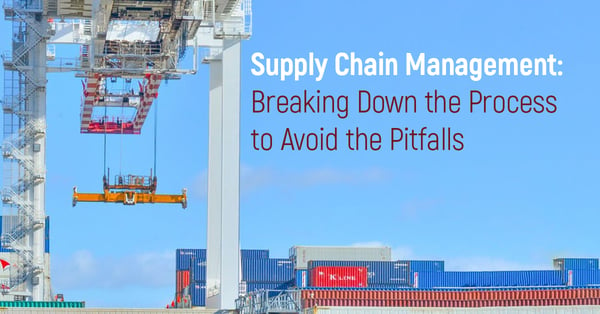
Supply Chain Management is a key piece to any business that produces and imports goods.
Making sure that every aspect of a supply chain is running efficiently can seem like a daunting task, but it’s critical to ensure your importing/exporting runs smoothly.
Effectively managing a supply chain means having everything in order, from product development and resource management to logistics and compliance. It’s making sure your company is reliable when it comes to filling orders, responsive to customers and suppliers, able to respond quickly and effectively to change, cost-effective, and efficient in its asset usage. By taking steps to properly vet your suppliers and ensure import compliance, supply chain managers can run an efficient supply chain process and avoid unexpected Customs fees.
Planning
The first step in the supply chain process is planning. To make sure everything runs as smoothly as possible, it’s recommended that supply chain managers make sure all paperwork is in order beforehand. Additionally, it’s essential that all of your potential suppliers are properly vetted during this step.
In the planning phase, you’ll decide what sort of products you’ll be producing and when and where you’ll be producing them. You should also take this time to ensure that your product and suppliers are in compliance with Customs to avoid non-compliance fees and headaches.
Sourcing
The next step in the supply chain is sourcing out the raw materials, products, services, and/or providers needed to produce your product. Be sure to choose a quality supplier that fits your company’s needs, and take the time to vet the suppliers you’re considering.
It’s also important to consider the impact of globalization when sourcing your materials. Pay attention to costs. Is it cheaper to keep your materials and production points in close proximity to each other, or does the cost stay the same regardless of where your materials are? Doing a little extra research into the logistics of location and pricing can help save your company both money and time.
Producing
As you begin the production process, it’s important to vet your suppliers. Make sure the factory producing your goods knows exactly how much product you need to avoid under- or overstocking, as either one could result in revenue loss for your company.
It’s also essential to double-check your production time, volume, and turn-around time to avoid understocking/overstocking, which could all result in revenue loss for your company as well.
For example, if you produce too much too quickly, you’ll end up with a warehouse full of overstocked goods, and these storage costs can add up quickly. On the other hand, if you don’t have enough product – especially during peak seasons– you run the risk of selling out and losing sales revenue. Ensuring the factory producing your goods can meet your company’s needs is also paramount in the production process.
Delivering
When it comes to delivering the final product, it’s best to do the legwork upfront. If there are mistakes in your paperwork, Customs will hold up the process; this means fees, exams, and re-exporting. All of this can end up costing your company exorbitant amounts of money. Doing your due diligence and completing all paperwork at the start can help you avoid this holdup and ensure a smooth delivery process.
Outbound export follows the same pattern. Exporting relies on having good partners—either owned offices or agents—at the destination offices. Since your overseas partners will be speaking to the end customer and ensuring how and when your goods are delivered, it’s important to choose your Customs broker and freight forwarding partners with care. Work with partners who will make sure your goods are delivered on time and that they go through the same process as import deliveries.
Returning
The return process really comes down to communication. If there’s a problem with an order, it’s essential that you communicate with the customer or supplier involved in the return. Returned goods can cause a spike in storage fees as they sit around waiting to be resold, so it’s important to stay on top of this process, regardless of the reason for return.
For example, if an ocean carrier’s container is sitting somewhere not carrying freight, they can’t utilize it. And if you don’t return it once you stop using it, you’ll often end up paying detention fees until the ocean carrier receives the container back. This and other such instances can be avoided by communicating with those involved in the return.
Supply chain management exists to create value through ensured efficiency. If certain aspects of the supply chain are slowing down the process, it’s most likely costing the company money. Excellent communication between all departments and parties involved is key to successful supply chain management. It will help supply chain managers to audit and pinpoint both good and bad areas in the chain so they can fine-tune the logistics for efficiency. Enlisting the help of logistics experts to help get you started or to go over your current supply chain from a different perspective may save your company time and money as well.



